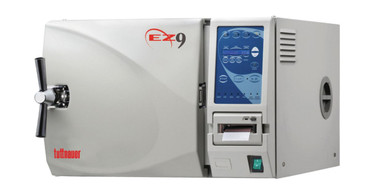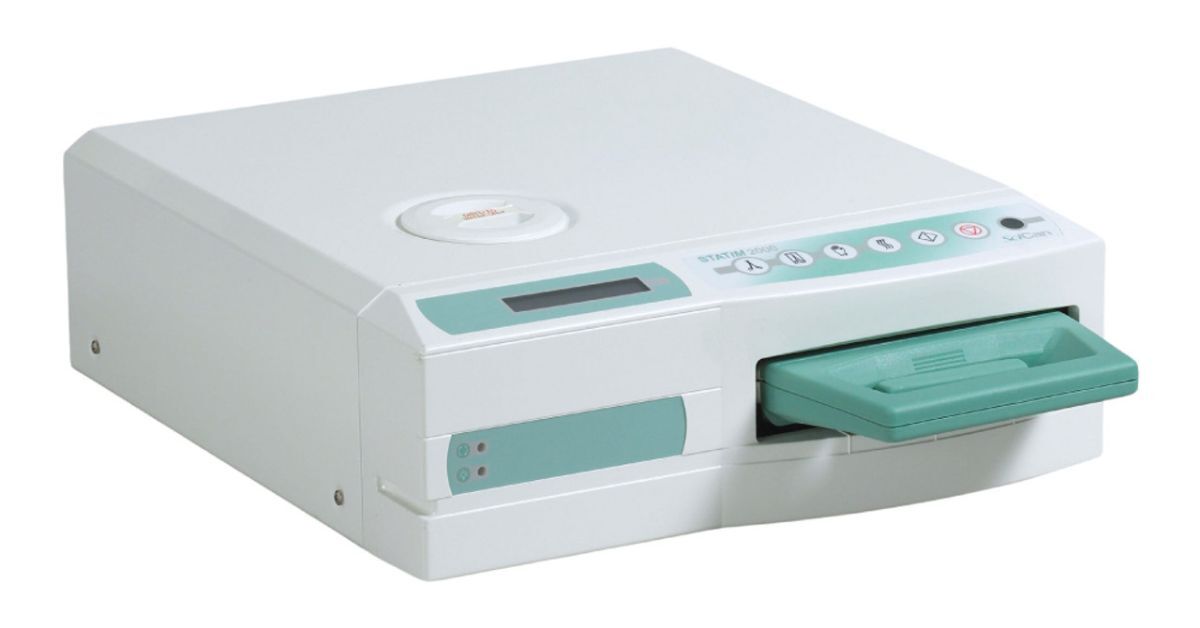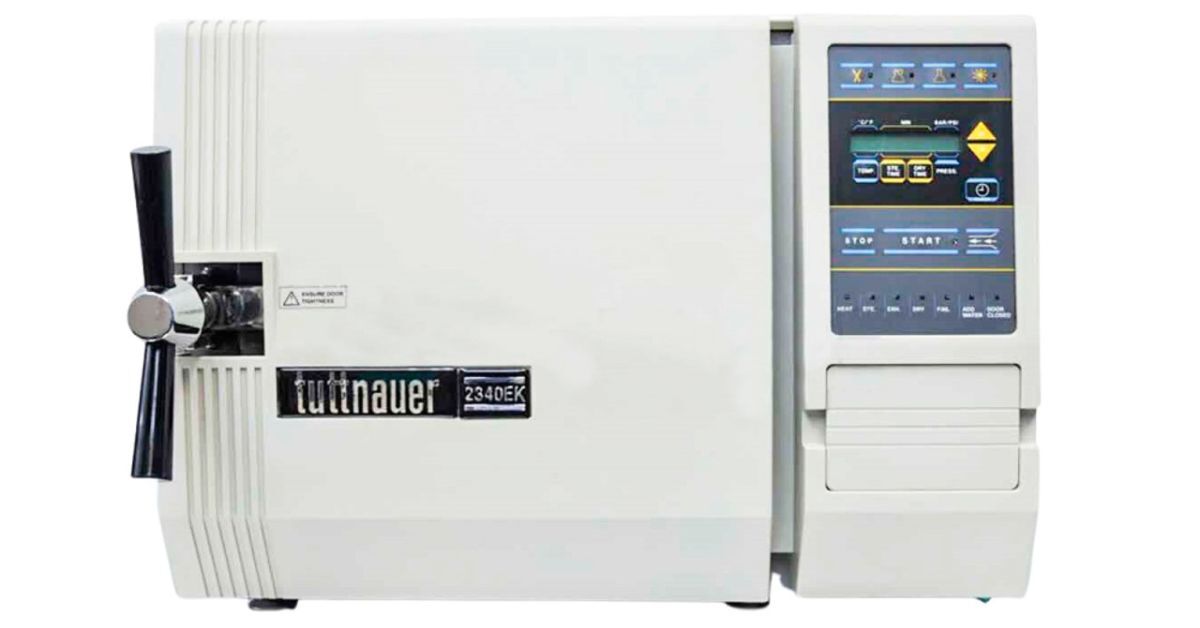
10 Things To Know About Sterilizing and Autoclave
Posted by Cevi Med on 11th Aug 2025
Proper sterilization can mean the difference between life and death in medical settings. Every day, healthcare professionals rely on sterilization to eliminate harmful microorganisms from surgical instruments, laboratory equipment, and medical devices. Without effective sterilization, patients face serious risks of infection, and healthcare facilities struggle to maintain safety standards.
For proper sterilization, most organizations rely on the autoclave, a powerful device that uses steam, pressure, and heat to destroy bacteria, viruses, spores, and other pathogens. These devices are well-known to anyone working in healthcare, dentistry, veterinary medicine, or laboratory sciences. If you’re looking for more information, here are 10 of the most important things to know about sterilizing and autoclave, from basic principles to advanced techniques.
What Is Heat Sterilization?
Sterilization is the complete elimination or destruction of all forms of microbial life, including bacteria, viruses, fungi, and bacterial spores. The process removes all viable microorganisms from objects and surfaces, creating a sterile environment essential for medical procedures, pharmaceutical manufacturing, and laboratory work.
Heat sterilization remains the most common and reliable method due to its effectiveness, speed, and cost-efficiency. Among heat sterilization techniques, moist heat sterilization using autoclaves has become the gold standard in most healthcare facilities.
What Is an Autoclave?
An autoclave is a pressurized chamber that sterilizes equipment and materials using saturated steam under pressure. The device combines three critical elements, steam, pressure, and heat, to achieve complete sterilization.
The basic principle involves heating water to create steam, then applying pressure to raise the temperature above the normal boiling point. This superheated steam penetrates materials and coagulates proteins in microorganisms, effectively destroying them.
The 10 Essential Things To Know About Sterilizing and Autoclaves
1. Temperature, Time, and Pressure Work Together
Successful autoclave sterilization depends on achieving the correct combination of temperature, time, and pressure. Higher temperatures allow for shorter exposure times, but the relationship isn’t linear. Each load type may require different parameters based on the materials being sterilized and their packaging. Understanding this relationship helps operators select appropriate cycles and troubleshoot sterilization failures.
2. Proper Loading Techniques Are Critical
When loading an autoclave, steam must contact all surfaces of every item, which means proper spacing and positioning are essential. Avoid overcrowding the chamber, as this prevents steam circulation. Place items on their sides when possible to allow steam to flow around them. Use autoclave-safe containers and wrapping materials that allow steam through and remain sterile after the cycle.
3. Different Materials Require Different Approaches
Not all materials can withstand standard autoclave conditions. Heat-sensitive plastics may melt or deform, while some electronics cannot tolerate moisture. Stainless-steel instruments handle autoclaving well, but carbon steel may rust without proper drying. Glass items require gradual heating and cooling to prevent thermal shock, and textiles need appropriate packaging to maintain sterility post-sterilization.
4. Pre-Cleaning Is Nonnegotiable
Autoclaves sterilize, but they don’t clean. Organic matter, such as blood, tissue, or other debris, can protect microorganisms from steam penetration, leading to sterilization failure. Use appropriate cleaning solutions, and follow manufacturer recommendations for each type of instrument. Pre-cleaning also extends instrument life by preventing corrosion and the buildup of organic matter.
5. Water Quality Affects Performance and Equipment Life
Poor water quality can cause mineral buildup, corrosion, and equipment failure. Most manufacturers recommend distilled or deionized water to prevent mineral deposits on heating elements and chamber walls. Regular water quality testing and proper use of water treatment systems protect your investment and ensure consistent performance. Replace water filters according to manufacturer schedules, and monitor water quality parameters regularly.
6. Biological Indicators Provide the Ultimate Test
While physical monitoring (temperature, pressure, time) and chemical indicators provide useful information, biological indicators offer the most reliable proof of sterilization effectiveness. These indicators contain spores that are more resistant to sterilization than most pathogens. If the sterilization process kills these spores, it should eliminate all other microorganisms as well.
7. Drying Cycles Are Part of Sterilization
Proper drying prevents wet packs, which can allow microorganisms to penetrate sterile packaging through wicking action. Most modern autoclaves include drying phases that use vacuum and heat to remove moisture. Some items may require extended drying times or post-sterilization drying in heated cabinets. Never remove items from the autoclave while they’re still hot and steaming, as this can cause burns and sterility breaches.
8. Documentation and Record-Keeping Are Essential
Maintain detailed records of every sterilization cycle, including load contents, cycle parameters, operator information, and test results. These records demonstrate compliance with regulations and help identify trends or problems. Proper documentation supports quality assurance programs, facilitates regulatory inspections, and provides evidence of due diligence in the event of adverse events.
9. Regular Maintenance Prevents Problems
Preventive maintenance keeps autoclaves running reliably and extends equipment life. Daily, weekly, monthly, and annual maintenance tasks should be clearly defined and consistently performed. Keep maintenance logs, and address minor issues promptly before they escalate into major problems. Partner with qualified service technicians for complex maintenance tasks, and always use manufacturer-approved parts.

10. Staff Training Never Ends
Even experienced operators benefit from ongoing training and refresher courses. Sterilization technology evolves, regulations change, and best practices improve over time. Ensure all operators understand basic principles, proper procedures, and troubleshooting techniques. Cross-train staff members to prevent single points of failure and maintain operations during absences.
How Purchasing Refurbished Autoclaves Benefits the Sterilization Process
Refurbished autoclaves offer significant advantages for healthcare facilities looking to maintain high sterilization standards while managing costs.
Updated Components
These units undergo comprehensive restoration processes that often include updated components, software upgrades, and thorough testing to ensure they meet or exceed original specifications.
Additional Investments
Quality refurbished autoclaves provide the same sterilization effectiveness as new units at a fraction of the cost. These cost savings allow facilities to invest in additional equipment, staff training, or other quality improvements that enhance overall sterilization programs.
Better Support Options
Many refurbished units come with warranties and service support comparable to new equipment. Reputable refurbishment companies often upgrade older models with modern safety features and control systems, providing enhanced functionality and user interfaces.
Shorter Lead Times
The shorter lead times for refurbished equipment help facilities quickly replace failed units or expand capacity. This quick availability prevents disruptions to sterilization schedules and maintains patient safety standards.
Sustainable Operations
Purchasing refurbished autoclaves also supports environmental sustainability by extending the life of equipment and reducing waste. This aligns with the environmental stewardship goals of many healthcare facilities while ensuring excellent sterilization outcomes.

Mastering Sterilization for Better Patient Outcomes
Effective sterilization, achieved through proper autoclave use, forms the foundation of infection control in healthcare settings. These 10 things to know about sterilizing and autoclave usage provide the knowledge base needed to achieve consistent, reliable sterilization results while protecting both patients and staff.
Investing in quality equipment, whether new or refurbished, requires the support of comprehensive maintenance programs and well-trained staff. That’s why Cevi Med is focused on providing our clients with the best service possible. If you’re looking for a used autoclave for sale at a price that can’t be beat, we’re here for you. See the difference that refurbished can make today!
